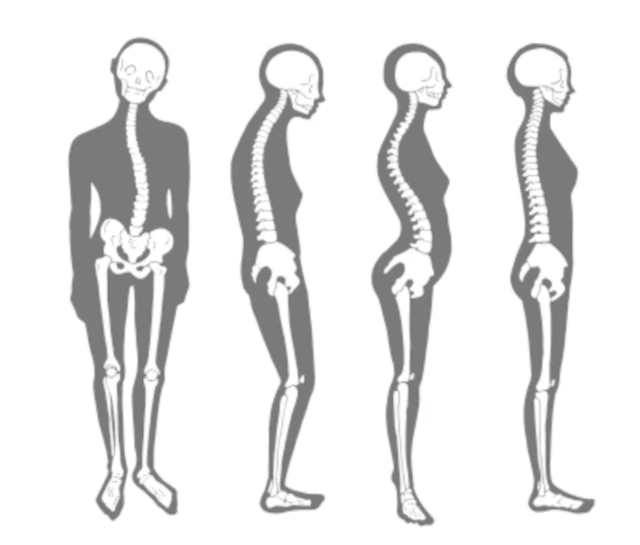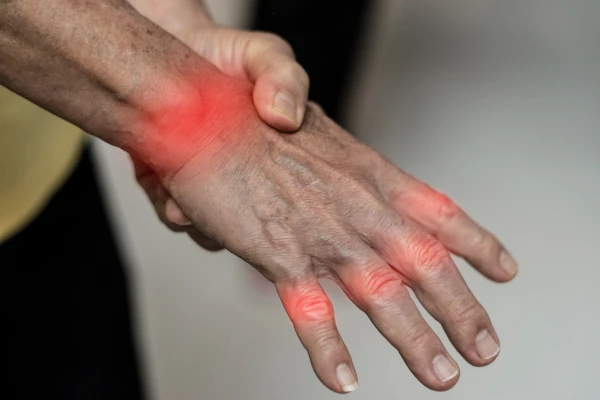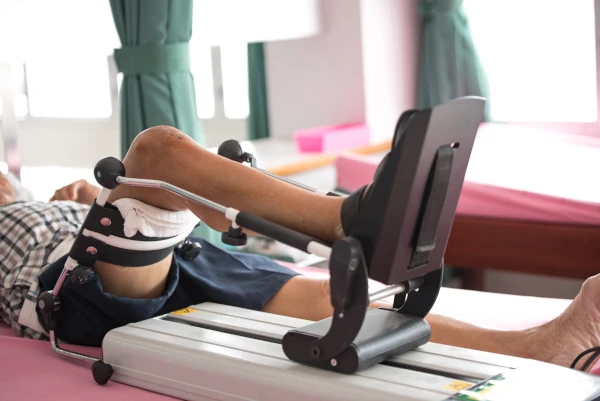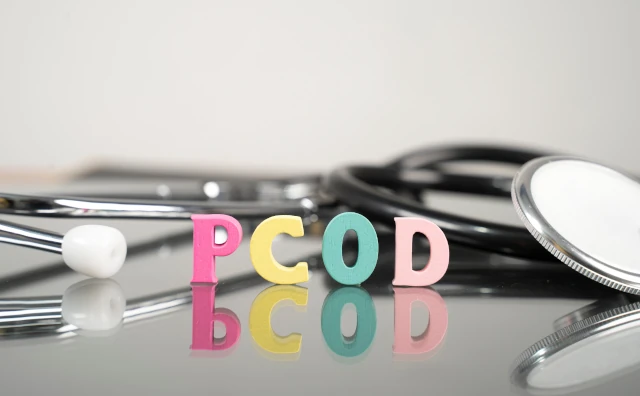
Kyphosis vs. Lordosis vs. Scoliosis: Understanding Spinal Curvatures
- Dr. Sonali Bansal (MPT)
Connect with our expert physiotherapist for personalized physiotherapy advice.
Spinal health is crucial for overall well-being, yet many people experience issues with abnormal spine curvatures. Kyphosis, lordosis, and scoliosis are common spine conditions that can impact posture, movement, and quality of life. In this guide, we’ll explore the differences between these three spinal curvatures, their causes, symptoms, and available treatment options to help you better understand each condition and ways to manage them effectively.
What Are Normal and Abnormal Spinal Curvatures?
The spine has natural curves that help absorb shock, support the body, and maintain balance. These curves include a slight inward curve in the lower back (lordosis) and an outward curve in the upper back (kyphosis). When these curves become exaggerated or shift in unnatural directions, they can lead to discomfort, pain, and other health complications.
- Kyphosis:
An exaggerated forward curve in the upper spine.
- Lordosis:
An exaggerated inward curve in the lower spine.
- Scoliosis:
A sideways or “S-shaped” curve in the spine.
Let’s examine each condition in detail.
What Is Kyphosis?
Kyphosis is characterized by an excessive outward curve in the thoracic (upper back) region of the spine, giving the back a rounded or hunched appearance.
- Causes:
Kyphosis can result from poor posture (postural kyphosis), osteoporosis, spinal fractures, or congenital issues. It’s commonly seen in teenagers who slouch and older adults with age-related spinal degeneration.
- Symptoms:
The most noticeable symptom is a rounded upper back. Other symptoms may include back pain, stiffness, and, in severe cases, difficulty breathing due to pressure on the lungs.
- Diagnosis:
Diagnosed through physical examination and imaging tests, like X-rays, to assess the curve degree.
- Treatment Options:
Mild cases may improve with posture correction exercises and physical therapy. Severe cases may require bracing or, in rare cases, surgery to correct the curvature.
What Is Lordosis?
Lordosis, also known as swayback, is an exaggerated inward curve in the lumbar (lower back) region, causing the abdomen and buttocks to appear more prominent.
- Causes:
Lordosis can result from obesity, muscle imbalances, poor posture, or spinal conditions like spondylolisthesis. Weak abdominal muscles and tight hip flexors can contribute to the development of lordosis.
- Symptoms:
People with lordosis may experience lower back pain, discomfort after standing for long periods, and limited range of motion in the lower back.
- Diagnosis:
Diagnosed through physical assessment and X-rays, focusing on the degree of curvature in the lower spine.
- Treatment Options:
Physical therapy and core-strengthening exercises are effective for mild to moderate cases. Severe cases, especially if accompanied by nerve issues, may require medical intervention, such as medication or surgery.
What Is Scoliosis?
Scoliosis is a lateral, or sideways, curvature of the spine, often forming an “S” or “C” shape. Unlike kyphosis and lordosis, scoliosis can affect the spine in multiple directions.
- Causes:
Most scoliosis cases are idiopathic, meaning they have no known cause. However, it can also be caused by congenital factors, neuromuscular diseases, or spinal injuries.
- Symptoms:
Symptoms include uneven shoulders or hips, a visible curve in the spine, back pain, and, in severe cases, reduced lung function.
- Diagnosis:
Scoliosis is often diagnosed during adolescence through a physical exam and imaging tests like X-rays. A scoliometer can measure the angle of the curve.
- Treatment Options:
Mild cases may only require observation and regular check-ups, while moderate cases often benefit from bracing to prevent further curvature. Severe cases might require spinal fusion surgery to correct and stabilize the spine.
Kyphosis vs. Lordosis vs. Scoliosis: Key Differences
Understanding spinal curvatures and their differences is essential for maintaining proper posture and spinal health. Here is a table comparing key features of kyphosis, lordosis, and scoliosis.
| Feature | Kyphosis | Lordosis | Scoliosis |
|---|---|---|---|
| Direction of Curve | Outward curve in the upper back | Inward curve in the lower back | Sideways “S” or “C” curve |
| Primary Location | Thoracic spine | Lumbar spine | Can occur anywhere along the spine |
| Common Causes | Poor posture, osteoporosis | Obesity, muscle imbalances | Idiopathic, congenital, neuromuscular issues |
| Symptoms | Rounded back, stiffness, pain | Swayback, lower back pain | Uneven shoulders/hips, visible curve |
| Treatment | Exercise, physical therapy, bracing | Core strengthening, physical therapy | Bracing, surgery if severe |
How to Identify Abnormal Spinal Curvatures
Detecting spinal curvature issues early can make a significant difference in managing symptoms and preventing worsening. Here are some simple ways to check your posture and spinal alignment at home:
- Posture Photos:
Ask a friend to take photos of your back, side, and front while standing naturally. Compare your alignment to see if you have any noticeable curves.
- Wall Test:
Stand with your back against a wall. Your head, shoulders, and hips should touch the wall, with minimal space at the lower back and neck. If your back doesn’t align well, you may have a postural imbalance.
- Bend Test (for Scoliosis):
Stand with feet together and bend forward. Have someone observe from behind; any asymmetry, like one side of the back appearing higher, could indicate scoliosis.
- Self-Check for Kyphosis or Lordosis:
In a side profile, look for exaggerated curves in your upper (kyphosis) or lower back (lordosis) that may be beyond the normal range.
Treatment Options for Kyphosis, Lordosis, and Scoliosis
- Physical Therapy and Exercise
- Kyphosis:
Focuses on strengthening the upper back and stretching tight chest muscles.
- Lordosis:
Emphasizes core strengthening, hip flexibility, and lower back stabilization exercises.
- Scoliosis:
Aims to improve muscle balance and flexibility around the spine, often with specific exercises like the Schroth method.
- Kyphosis:
- Bracing
- Kyphosis:
Often recommended for young individuals with severe kyphosis to prevent worsening curvature.
- Lordosis:
Less common, but a lumbar support belt can be helpful for temporary relief.
- Scoliosis:
Bracing is effective for adolescents to prevent curve progression, especially in growing children.
- Kyphosis:
- Surgery
- Kyphosis:
Rarely required but may be considered in severe cases causing pain or breathing difficulty.
- Lordosis:
Generally reserved for extreme cases where curvature affects nerve function or mobility.
- Scoliosis:
Spinal fusion surgery is often considered for severe cases that don’t respond to bracing and continue to progress.
- Kyphosis:
Conclusion: Managing Spinal Curvatures for Better Health
Understanding the differences between kyphosis, lordosis, and scoliosis can help you take proactive steps toward better spinal health. Whether it’s through regular stretching, strengthening exercises, or medical interventions, addressing spinal curvature issues can significantly enhance your comfort, posture, and quality of life. Remember, early intervention and proper management are key to maintaining a healthy, aligned spine.
Connect with our expert physiotherapist for personalized physiotherapy advice.



